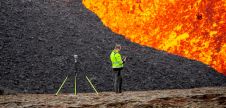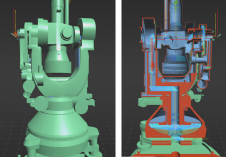Making a Difference
自然灾害会造成社会和过度负担的国家经济体系的大规模破坏。但是,地球观察可能有助于提供有关灾害风险和发作的更好信息,包括早期警告和灾难监测,从而有助于最大程度地减少影响并避免生命和财产的巨大损失。
许多国际组织正在解决此问题,包括地理空间信息协会联合委员会(JB GIS)和联合国外在航天事务办公室(UNOOSA),该办公室正在启动联合国,用于灾难管理和紧急情况的空间信息平台响应(UN-SPIDER)程序。这项努力的结果之一是小册子Geoinformation for Disaster and Risk Management – Examples and Best Practices, which demonstrates how various aspects of geospatial technology can be integrated into risk and disaster management.
A follow-on publication demonstrating and evaluating the economic, humanitarian, operational and organisational benefits of applying geoinformation to disaster management would help to raise awareness in the political and programmatic environment and to set priorities in research and development. This is the goal of the ongoing project called VALID (The Value of Geo-Information for Disaster and Risk Management), which is expected to result in a differentiated, scientifically founded answer to the crucial question: ‘What difference can geoinformation make?’
正在遵循一种两倍的方法,以确保对灾难管理的地理信息的好处以及对灾难管理周期的最佳覆盖范围的整体看法。在社会经济福利分析中,货币方面得到了解决。同时,通过基于网络的调查,探索了全球利益相关者社区的“默契”知识和实践经验。
尽管任何地理信息产品的成本都可以很容易地估算,但在成本效益分析中,其社会利益货币化更为复杂。因此,将进行全面的文献综述,从而导致一系列需要解决组织,信息和基础架构方面的需求。已经建立了全面的文献数据库。
首先,在UN-Spider知识门户上进行了基于网络的民意调查(www.un-spider.org/publications/valid). All stakeholders were asked to identify the 10 most important geodata products and systems on a longlist containing 51 items such as hazard-specific risk maps, vulnerability maps, damage assessment maps and monitoring systems. The resulting reference set (table 1) highlights the global community’s concerns about flood, earthquake, drought, fire, and landslide hazards, as well as the importance of risk analysis and monitoring.
目前正在与领先的地球科学协会合作进行技术详细描述此参考集,并将很快将其传播到全球最终用户社区进行标准化的福利评估。最终将这种差异化用户评估的结果与社会经济分析的结果进行比较,这将是令人兴奋的。
The overall results of VALID are scheduled to be published in booklet format in summer 2013.

























